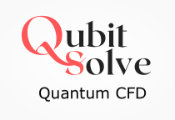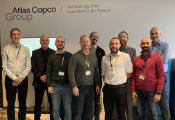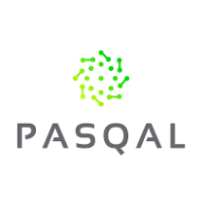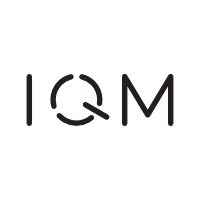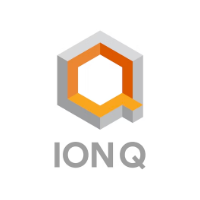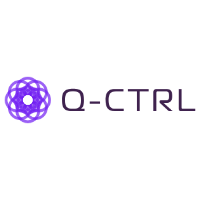Quantum Error Correction Is Crucial, but the Ecosystem Isn’t Ready
Quantum error correction (QEC) is no longer a distant goal. It is a current and critical priority.
In Riverlane’s 2025 QEC Survey, conducted across more than 300 quantum professionals from academia, industry, and national laboratories, 95% of quantum professionals rated QEC as essential to scaling quantum computing. Furthermore, almost two-thirds of respondents rated its significance for the scalability and future success of quantum computing as 10 out of 10.
However, while the community is highly motivated, it is also under-supported. A staggering 99% of respondents are interested in QEC as a field of study, but a lack of training, the absence of best practices, and limited resources are slowing down progress at this critical moment.
As the world leaders in quantum error correction, Riverlane launched this global survey to understand where the ecosystem stands and what it needs to move forward.
The message is clear: QEC sits at the heart of scalable quantum computing. But the ecosystem is struggling to keep pace with the challenges QEC introduces to today’s quantum systems.
QEC's critical importance and growing interest
QEC is widely recognised as crucial for realising practical and scalable quantum computing, surpassing the limitations of current Noisy Intermediate-Scale Quantum (NISQ) devices.
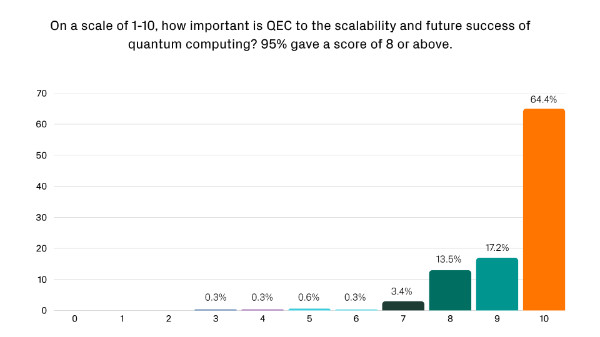
Multiple respondents explicitly stated that QEC is essential for fault-tolerant quantum computation and large-scale quantum computers.
“Getting QEC to work on a large scale is an existential challenge for the quantum computing industry,” according to one respondent from a leading US quantum computing company.
This aligns with the significant industry shift seen in the last 12 months, where QEC is now embedded in both global government strategies and the roadmaps of the world’s leading quantum hardware companies.
For example, IQM plans to transition from NISQ to QEC processors in 2027, using an initial 300 physical qubits and 1-2 logical qubits, targeting fault tolerance from 2028 onwards. Oxford Quantum Circuits (OQC) wants to release a MegaQuOp system with 200 logical qubits in 2028. IBM plans to release an error correction decoder with 120 physical qubits in 2026, predicting fault tolerance by 2029.
The UK government is targeting one million error-free quantum operations (MegaQuOp) by 2028. In the USA, DARPA’s Quantum Benchmarking Initiative (QBI) offers up to $300m per third-stage award to determine which quantum computing approach can achieve utility-scale operation by 2033. Stage-one selected hardware companies are tasked with designing “a utility-scale quantum computer concept that has a plausible path to realization in the near term” in the next couple of months.
While individual metrics and definitions may vary, each quantum computing roadmap and government strategy essentially says the same thing: the need to integrate quantum error correction by 2028, at the latest.
Teams and knowledge are growing, but a lack of skills is the top barrier
The quantum community clearly understands the scale of the challenge. 96% of respondents will rely on external support to implement QEC. Most plan to rely on partnerships and collaborations (21%) or a hybrid in-house and partnership approach (43%) to implement QEC in their quantum computing projects.
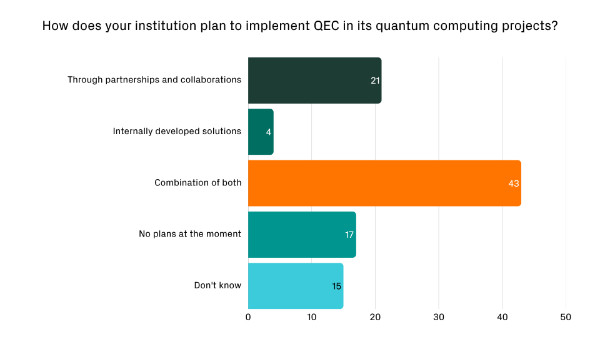
The survey also reveals a young, highly educated, and deeply engaged cohort where 94% of respondents have at least some familiarity with QEC research.
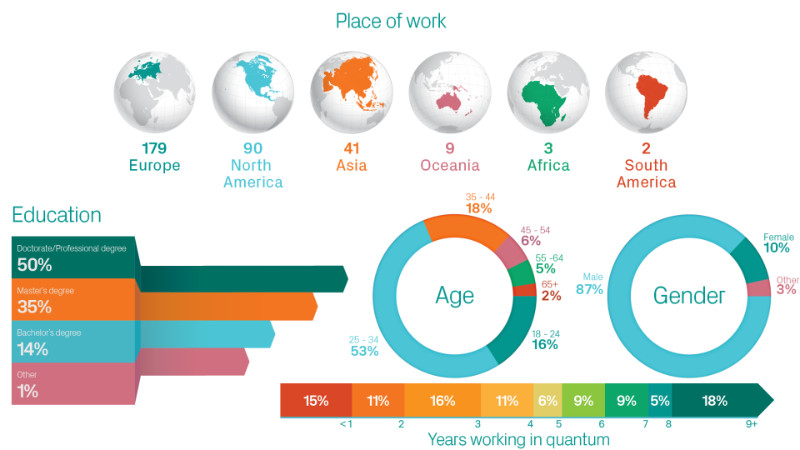
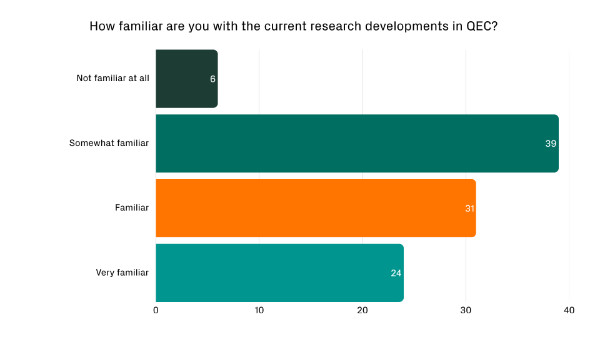
Some 88% of respondents can build quantum circuits, and most of these (87%) are already using Qiskit. However, only 62% have built a surface code circuit, and 60% have built other types of quantum circuits, including qLDPC, Steane, color and repetition codes, to name a few.
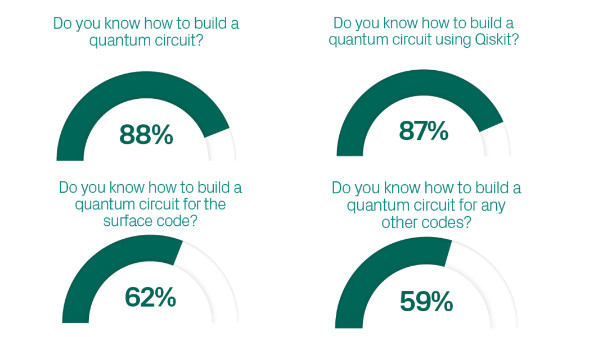
Despite its recognised importance, significant practical hurdles exist in implementing QEC, resulting in delays in progress. Lack of expertise, access to resources, and clear guidance compound the difficulty.
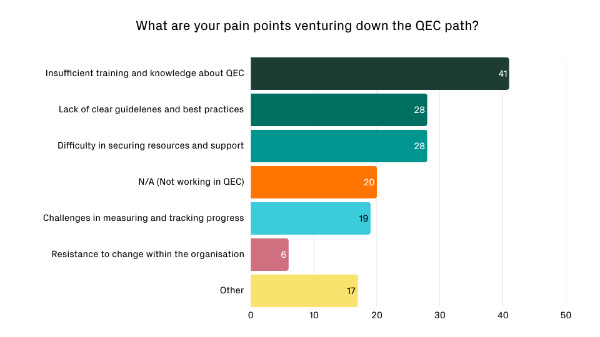
The most cited blocker was limited training and knowledge, reported by 41% of respondents. A further 28% highlighted the absence of best practices and clear guidelines, and another 28% cited difficulties in securing resources and support.
“Making an impact in practical QEC requires an expensive starting investment of both time and money,” one respondent from a leading US university stated.
Another postgraduate student said: “While many companies are focusing on breakthroughs in quantum error correction (QEC), I would love to see more conscientious efforts dedicated to developing the next generation of scientists and engineers.”
However, only 6% said “resistance to change in the organisation” was a barrier. This clearly demonstrates that, across the board, the community is hungry to get to grips with QEC.
The quantum gap
The gap between today’s quantum computers and QEC capabilities was also clear. When asked what other pain points they were experiencing, many respondents also cited a ‘lack of sufficiently large and stable quantum computers to run experiments’.
One chief science officer also noted: “QEC is going through a period of great change right now. The right path is not clear. It is an interesting time of great opportunities. But it is also hard to plan exactly how to benefit from early FTQC.”
This makes sense. The barriers for QEC adoption are high, and the community lacks a ‘playground’ where individuals and companies can begin to learn how to implement QEC and use larger quantum computers.
Yet, work has already begun for the majority of quantum organisations. Two-thirds of organisations have allocated moderate resources in QEC (36% with small teams) or significant resources (15% larger team and budget). A further 14% reported no resources, and another 14% are not working in QEC.
Building on our earlier findings about QEC strategies, while two-thirds of respondents said their institution is actively working on QEC, just 4% plan to build their QEC infrastructure internally.
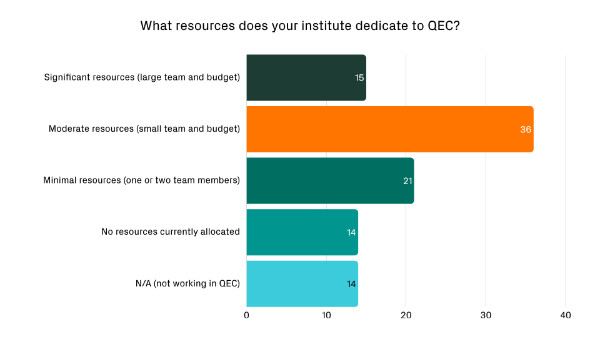
Where do we go from here?
At Riverlane, we believe QEC is no longer just a research topic. It is the core challenge of building useful quantum computers. This survey confirms what we hear from our partners and across the broader quantum community. Teams are ready to start running QEC experiments, but too often, they don’t know exactly how or where to start.
We’ve made it our mission to build the world’s best team to solve the quantum error correction challenge. So, we now want to pay that knowledge and expertise forward and help the entire quantum community get to grips with QEC.
That’s why we’re expanding our QEC capabilities to include enablement and open-source software development, fostering education and elevating the entire quantum community, helping them adopt and implement QEC techniques.
We’re currently building essential tools, resources, and a supportive ecosystem for quantum programmers, ensuring that QEC usability keeps pace with advancements in hardware.
More details are coming soon. Sign up here for updates.
Survey results at a glance:
- 95% of quantum professionals rated QEC as essential to scaling quantum computing.
- 99% of respondents are interested in QEC as a field of study
- 96% of respondents will rely on external support to implement QEC.
- While two-thirds of respondents said their institution is actively working on QEC, just 4% plan to build their QEC infrastructure internally. Most plan to rely on partnerships and collaborations (21%) or a hybrid in-house and partnership approach (43%) to implement QEC in their quantum computing projects.
- 94% of respondents have at least some familiarity with QEC research.
- 88% of respondents can build quantum circuits.
- The most cited blocker was limited training and knowledge, reported by 41% of respondents. A further 28% highlighted the absence of best practices and clear guidelines, and another 28% cited difficulties in securing resources and support.
- Only 6% said “resistance to change in the organisation” was a barrier. This clearly demonstrates that, across the board, the community is hungry to get to grips with QEC.
- Two-thirds of organisations have allocated moderate resources in QEC.

